Having a cup of coffee with brother and sister Claudio and Ginha Andrade is not exactly like sitting down at your local Starbucks. It starts with a drive to the Santo Antonio de Lisbao neighborhood in Florianopolis on Santa Catarina Island in Brazil. There, in an old manioc flour mill, the local ceramic artist and his sister initiate guests in the art of creating a good cup of caboclo, a type of Brazilian shade-grown coffee.
The Andrade Mill and Old House is preserved as a working manioc mill, still powered by animals, as it has been since the Azoreans first began growing and grinding manioc here in 1748. The grinding of the manioc, or farinhada, is a community event that brings the whole neighborhood out to the farm to sing and dance while the animals grind the manioc into flour.
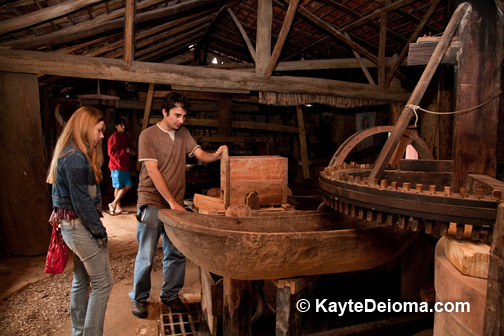
Eduardo Vieira is translating for me as we tour the mill. Claudio and Ginha speak only Portuguese, a language I haven’t yet mastered. Claudio’s ceramic sculptures and tiles are incorporated into the architecture and displayed in various nooks and crannies. Another curiosity is a collection of costumes and props from the local Boi de Mamăo folk festival.
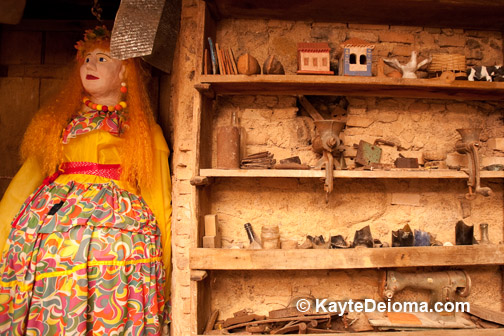
After we’ve explored the mill, we get down to the business of coffee. The first stop is to check out the coffea plants growing in the courtyard of the Old Mill House. The plants are about 7 or 8 feet tall and loaded with berries (also called cherries) in varying stages of ripeness, but mostly pretty green.
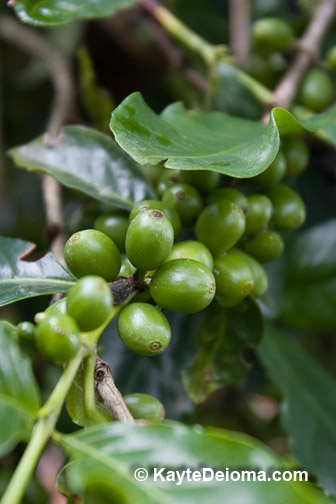
We follow our guides to a trough filled with ripe coffee berries in festive shades from orange-yellow to deep burgundy.
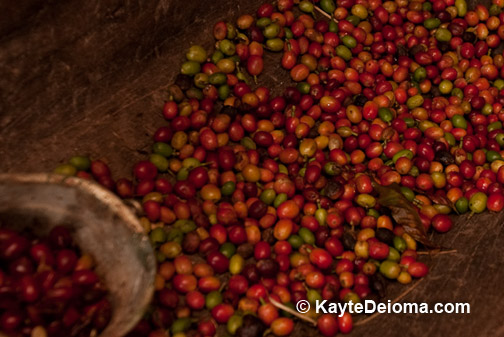
Obviously we don’t have time to sit and wait for coffee cherries to dry, so Ginha produces a basket of already dried out berries and adds them to a giant wooden mortar. Now the work begins as we take turns mashing the hulls off the fruit with a heavy four-foot-long pestle.
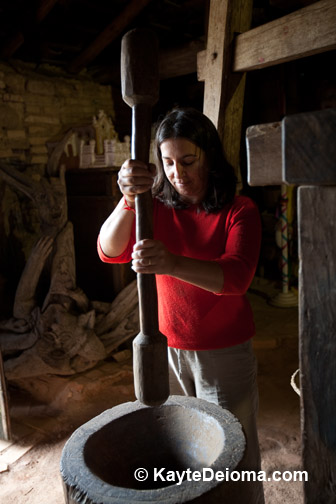
When she judges we’ve mashed enough, Ginha scoops the bits and pieces into a basket and takes us back out in the yard, where she demonstrates how to winnow the husks from the seeds. With the large flat basket extended in front of her she shakes the contents up into the air and blows on it to send the lighter husks falling to the ground, while the heavier seeds fall back into the basket.
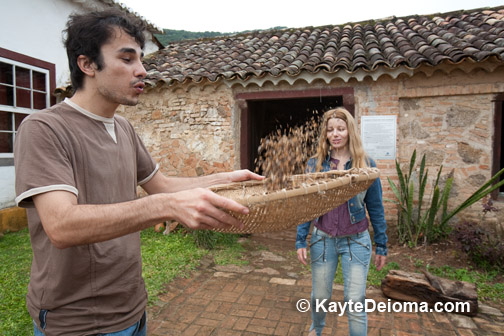
We each try to master the timing of shake, toss, blow, to separate the coffee kernels from the waste. When most of the outer matter has been cleared, we pick out the coffee beans, which are really more like seeds or cherry pits, and transfer them to a smaller basket to carry them to the kitchen.
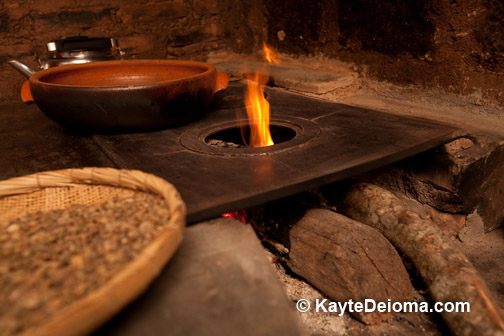
Claudio lifts the cover off the wood-burning stove to expose the flame, and the coffee beans are placed in a shallow clay bowl directly over the flame. We each take a turn keeping the beans moving.
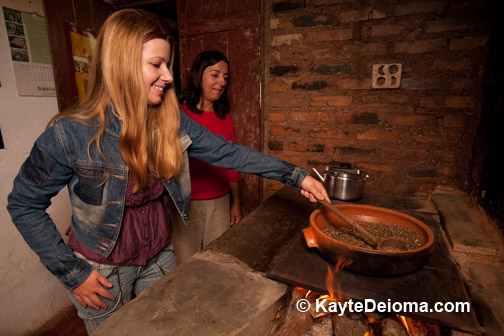
After 15 or 20 minutes of constant stirring to keep the beans evenly roasting, Claudio adds a generous scoop of sugar for the last few minutes over the flame to add the final dark sheen.
Still steaming, the fragrant gems are returned to the monster mortar and the workout begins again. No electric grinder here, just brute strength.
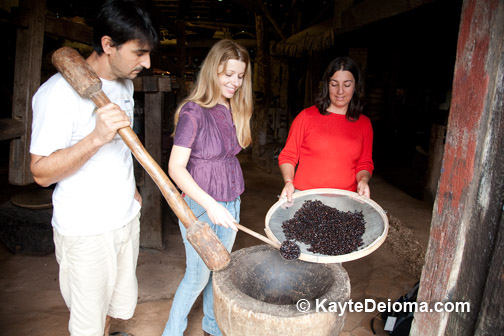
When Ginha declares the grounds fine enough, it’s back to the kitchen, where the filter-lined plastic drip coffee maker looks terribly modern set over a metal coffee pot. Hot water is added from a steaming kettle and the already strong aroma of coffee that lingered from the roasting gains another dimension.
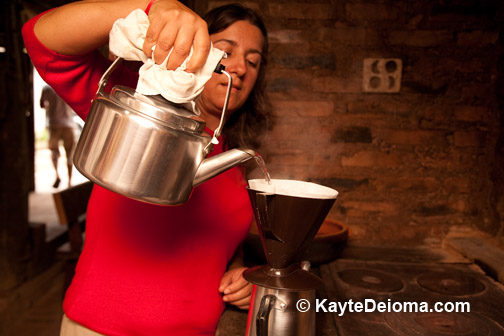
With the dark brew transferred to a thermos pitcher, we adjourn to the dining area, a cloth-covered table with wooden benches against exposed stone walls with wooden shutters. A portrait of Jesus in an ornate clay frame crafted by Claudio oversees our repast of cookies and caboclo coffee. I don’t know if it’s the sweat equity invested, or this place, or these warm-hearted people, but this elixir far transcends the common cuppa joe. The remaining ground coffee gets bagged and sent home with me as a tasteful souvenir. Good memories with every cup.
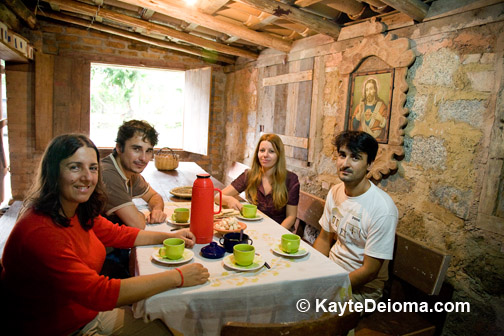
The Caboclo Coffee experience is one of several cultural immersion programs that visitors to Santa Catarina can enjoy. Other options include a clay sculpting workshop with Claudio at the Old Mill House; spending a day out with local fishermen; learning traditional methods to spin and dye wool from a local textile artist; making the berimbau rhythm instruments used in capoeira; the Oyster Experience in Ribeirao da Ilha including a visit to an oyster farm, learning to cook oyster dishes and visiting a local museum; and a cooking class featuring Brazilianized dishes from the Azores.
For more information or to book this experience, visit http://www.santacatarina.travel/experience.php?idioma=2

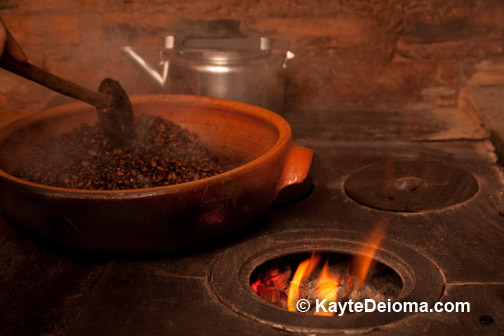
This is no more. I can not find it even in the website. Please update.